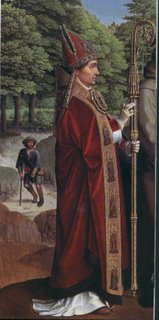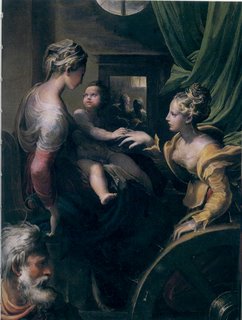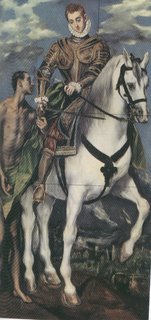 What is the difference between the act of St. Martin in giving his cloak to the beggar and the acts of St. Vincent de Paul in giving clothes to the beggars? St. Martin’s act was his initial act towards repentance leading him to the infused theological virtue of Faith, and eventually Hope and Charity. St. Vincent de Paul’s act was the expression of the virtue of Charity already possessed and expressed in love of neighbor. St. Martin was on his way to the Charity that St. Vincent de Paul already possessed.
What is the difference between the act of St. Martin in giving his cloak to the beggar and the acts of St. Vincent de Paul in giving clothes to the beggars? St. Martin’s act was his initial act towards repentance leading him to the infused theological virtue of Faith, and eventually Hope and Charity. St. Vincent de Paul’s act was the expression of the virtue of Charity already possessed and expressed in love of neighbor. St. Martin was on his way to the Charity that St. Vincent de Paul already possessed.The act of St. Martin of Tours, differentiated from St. Vincent de Paul's act, is described by Pope Benedict XVI thus: St. Martin of Tours' giving alms to the beggar can be compared to a flower, say a violet or a rose, viewed at night. The flower is there, its color is there, but we cannot see it due to the darkness. In the case of St. Vincent de Paul, his acts are like those flowers under the brightness of the sun, and we appreciate their full colors. The sun is Charity.
St. Vincent the de Paul and Mother Teresa, too, were once like Roses in the darkness of the night. St. Martin of Tours eventually turned into a bright flower under a full bright sun.
When St. Vincent de Paul and Mother Teresa reached Perfect Charity, their work afterwards became expressions of God’s Will known from Charity already possessed. Charity moved Mother Teresa to go to India. Charity moved St. Therese of the Child Jesus to remain in a convent instead of going to Vietnam to be a missionary.
Note that one and the same act can be, on the one hand, an act leading to Faith, Hope and Charity, while for another an expression of Perfect Charity already possessed. The effects are different. In the first, the effect is personal sanctification of the one doing the act. In the second, it is the 'Glory of God.' In the first, the good act is not yet enlightened by Perfect Charity, and therefore the recipients of such acts do not feel the goodness of, and the attraction to, God, unlike that which come from the overflow of Perfect Charity already attained : the recipients and, and even those who witness such acts, are attracted to the goodness of God or to the Christian religion, or may even be moved towards conversion.
The first, though motivated by the initial seed of charity, is not fully enlightened by the perfection of charity.
Martin was a catechumen when he first helped the beggar; he was at the onset of his climb to Faith. Then going into the monastic life (which St. Ignatius, likewise, did in his heremitical life at Manresa), he aimed at Faith and reached Perfect Charity, after which he preached and did other works as an overflow of Charity.
A common mistake is to consider every one helping the poor as a Mother Teresa or a Vincent de Paul. Though, ascetically, we don't have to know the difference, mystically, it is good to know the theological difference.
The difference is this: that God’s presence in the world is felt only in acts that are an overflow of Perfect Charity already possessed by the souls who do them. (Painting is "St. Martin and the beggar" by Gerard David, 1501.)


